Zoo Med's Beginner's Guide to






































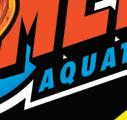






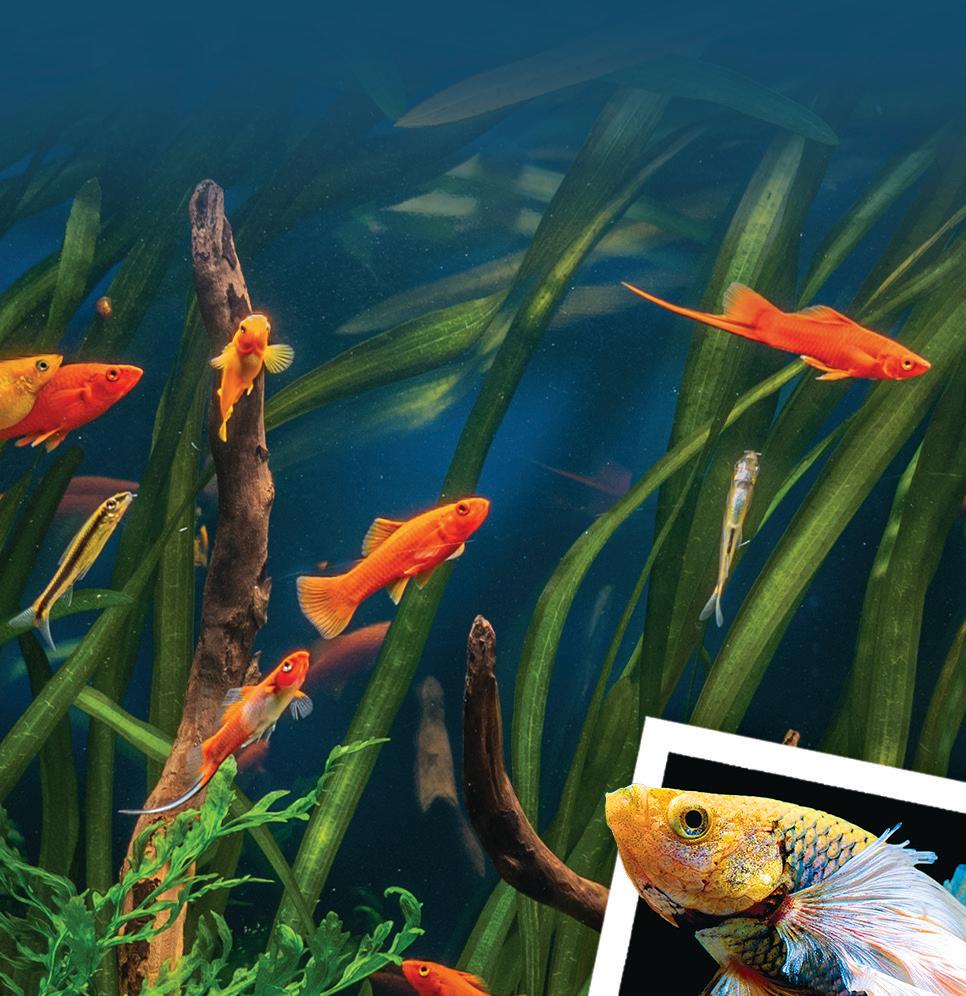
 By: Samantha West
By: Samantha West
With contributions by: Charles Rambo

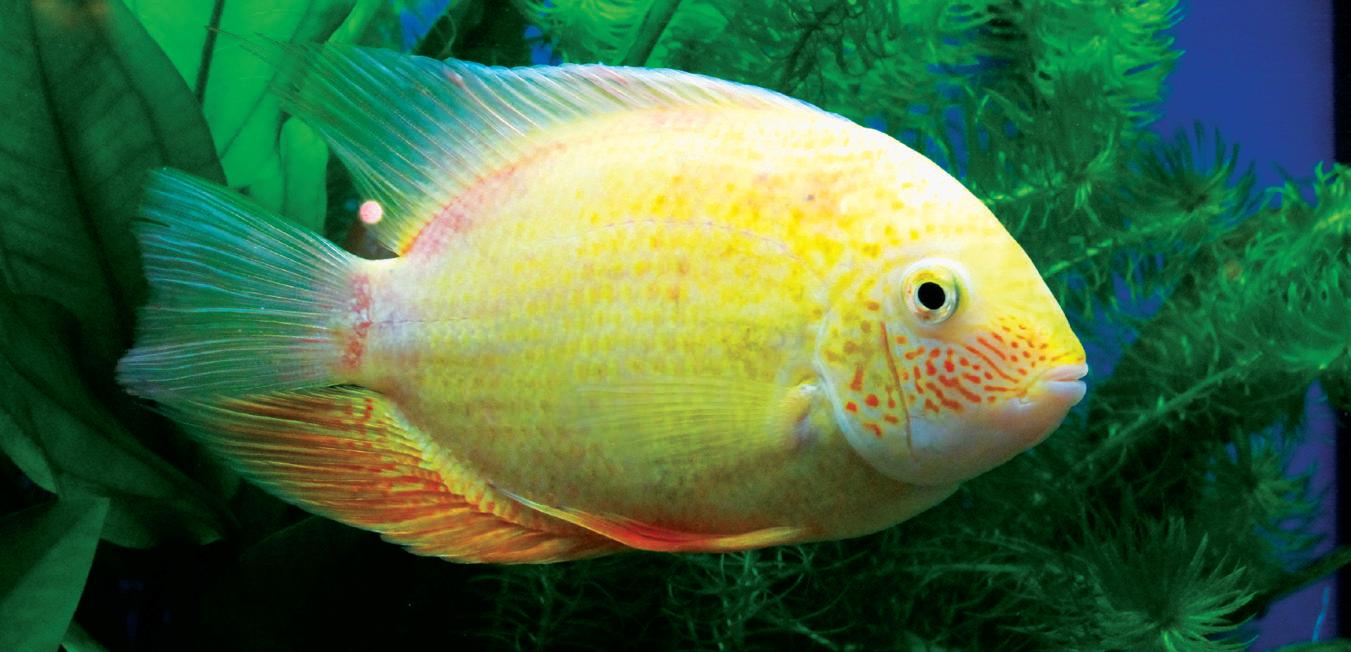
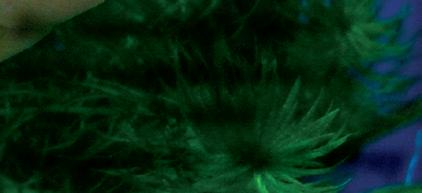



Fish are some of the most beautiful and interesting pets an animal owner can keep. Aquariums are a peaceful and relaxing piece of nature that can offer a break from our stressful, fast-paced world; and once fish are established, their care is straightforward. Zoo Med Labs has developed this guide as an introduction to freshwater fish keeping for beginners. While this book will cover a lot of what you'll need to know as a first-time fish keeper, always remember that you should be researching your specific type of fish to ensure you are giving the best possible care. With the help of this guide, you can have a beautiful, healthy fish tank to keep you company for years to come!



Ancient Sumerians were the earliest known aquarists, who kept fish in artificial ponds as long ago as 2500 BC. Archaeological evidence suggests that ancient Egyptians, Babylonians, and Romans also kept fish. The Chinese were the first known fish breeders, selectively breeding carp as early as 960 AD. Ornamental goldfish became available in Europe in the late 1600s. The first modern fish tank was invented by Jeanne Villepreux-Power in 1832, and by the 1850s, enough was known about water cycling to keep fish alive in captivity more successfully. The first public display aquarium was opened in 1853 at Regent's Park in London, quickly followed by many more around the globe. After World War II, pilots started transporting fish in planes, allowing for fish species from around the world to become more available to aquarists; and in the 1960s, advancements in filtration technology, fish food manufacturing, and overall knowledge allowed for fish keeping to become easier and less expensive for regular consumers. Now with the advent of the internet, aquarists can share knowledge more easily than ever before, and fish keeping continues to increase in popularity.

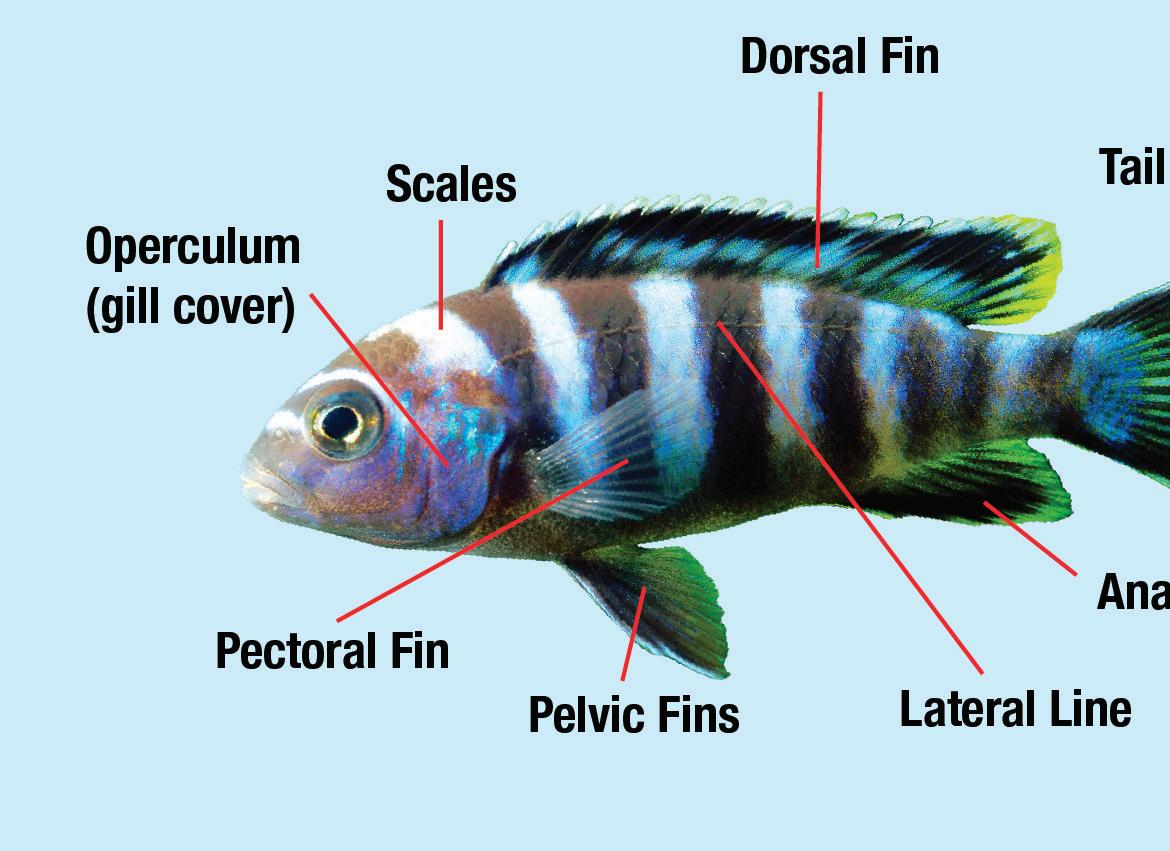
Below is a diagram with names and descriptions of the basic anatomical parts of a fish. Remember that while many fish have these characteristics, every species is different – for example, many popular catfish species don’t have scales!
• Dorsal, Tail, Anal, Pelvic, and Pectoral Fins – these all assist the fish in moving through the water. They are also often the first parts of a fish to show any signs of disease. Make sure to periodically check your fish’s fins for raggedy ends or discoloration.
• Scales – these protect the fish from predators and show off the fish’s natural coloration. On top of a fish’s scales or skin is a protective layer of mucus known as a slime coat.
• Operculum (gill cover) – underneath this flap are a fish’s gills, which it uses to pull oxygen out of the water – gills are how a fish can ‘breathe’ underwater!

• Lateral Line – this is a line of holes in the fish’s skin that allows water to enter the fish. These holes lead the water into special organs that allow a fish to sense water temperature, pressure, chemistry, and even electric fields and movement caused by other animals!
• Swim Bladder (not pictured) – an organ inside the fish that is filled with air so that fish can float in water. Without it, fish would sink to the bottom of their tank.
The tank size and shape you buy will depend on the type and number of fish you wish to keep. Beginner fish keepers should start out with hardy, commonly available species.

Good fish species for beginners include:
• Fancy Guppies (Poecilia reticulata)
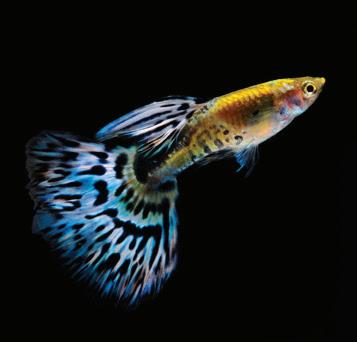
• Mollies, Platies, or Swordtails (livebearers, Xiphophorus spp.)
• Neon Tetras (Paracheirodon innesi)

• Rasboras (Rasbora spp.)
• Zebrafish (also called Zebra Danios, Danio rerio)
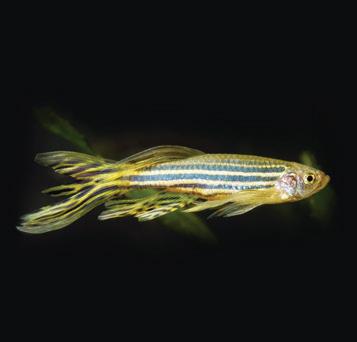
• Betta fish (Betta splendens)
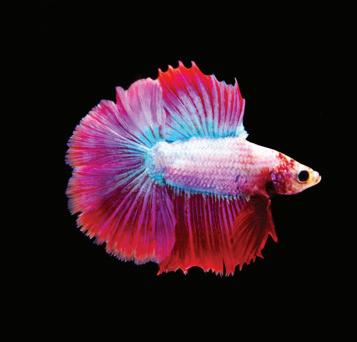
• White Cloud Minnows (Tanichthys albonubes)
• Cory catfish (Corydoras spp.)
A common rule of thumb is that one gallon of water will support one inch of fish length; so a ten-gallon tank can hold up to ten one-inch fish. However, requirements will vary slightly by species, so do some research if you have a particular fish species in mind. First-time aquarists should start with at least a 20 gallon tank until they become more experienced. Many beginning fish keepers want to start with a small tank, but smaller tanks are actually more challenging than large tanks to establish and maintain, as the small water volume can lead to poor water quality more easily.
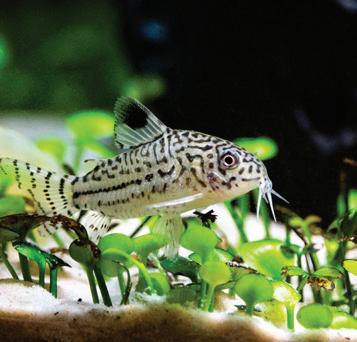
Aqu ium
recommended 20 gallon size for beginners
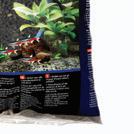
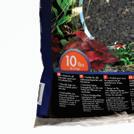
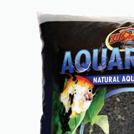


Aqu ium Co r




a glass top or full coverage light hood

Sub r e
gravel or sand, like Zoo Med's AquaRocks
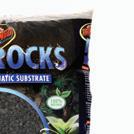
c
live or plastic plants, hides, or wood pieces, like Zoo Med's Spider Wood or Mopani Wood




Light Fixture

LED or linear fluorescent, like Zoo Med's AquaEffects


LED Aquarium Lights or T5 High Output Ultra Sun Super Daylight




w er co er
w er h ter
rmometer
Filter
f h f d
Gra l vacuum
Or siphon hose for substrate

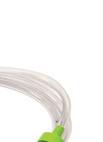

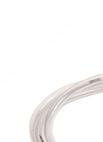
cleaning
Net
For removing left-over fish food
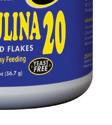
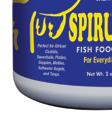
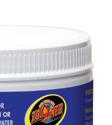

mer
To automate your lights - Optional

W er Qual y T ng K

Optional
Bacterial W er A i
Optional


Place your tank on an aquarium stand that can support the weight of a tank, water, and gravel. Water weighs over 8 pounds per gallon, making a 20 gallon tank with everything inside close to 200 pounds! Avoid setting it up anywhere it will receive direct sunlight – this can cause huge temperature swings and rapid algae growth.












Once you’ve decided on a tank location, position your tank and fill it with substrate.

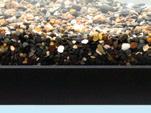





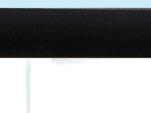
• Always rinse your substrate first, until the water runs clear!
• A good rule of thumb is to use one pound of substrate per gallon of aquarium water.

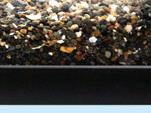


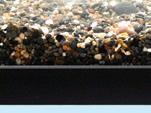




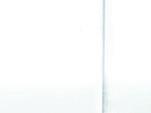





Fill your tank halfway with water by placing a dish or bowl on top of the substrate and pouring water slowly onto the dish or bowl. Be sure to treat your tap water with water conditioner.




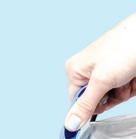

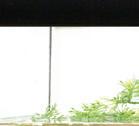
Add your décor to the tank. Be aware that real wood pieces may float at first; you can weigh these down with rocks until they’ve absorbed enough water to stay sunken on their own. Bury plant roots completely in gravel, leaving rhizomes exposed.

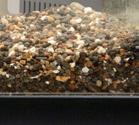
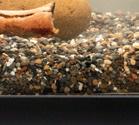

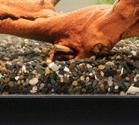

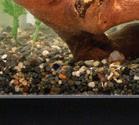
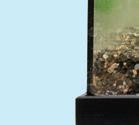

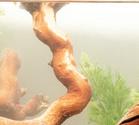


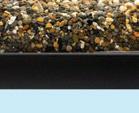
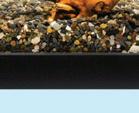

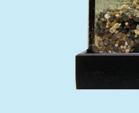

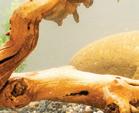
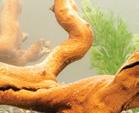
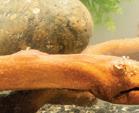

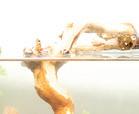

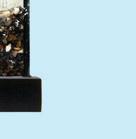

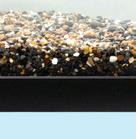
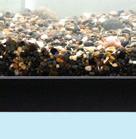
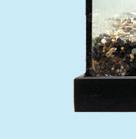




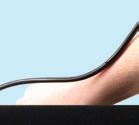









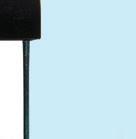
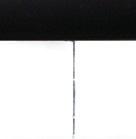



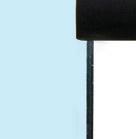
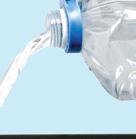











Place your filter, heater, and thermometer where you would like them in the tank. Wait at least 20 minutes before you plug in your heater, so its internal thermostat can adjust to the water temperature. Wait to turn on your filter until you’ve completed your tank’s setup and the water level is full.


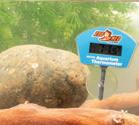




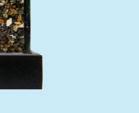


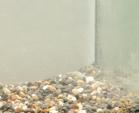


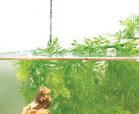




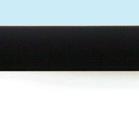
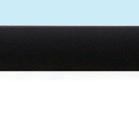

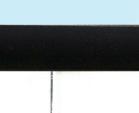


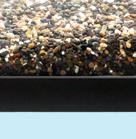






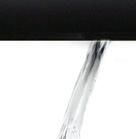
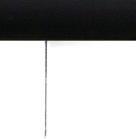




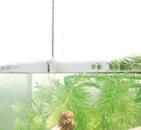

Fill the rest of the tank with water, but stop filling it about an inch from the lip of your tank. This will ensure that you don’t overfill the tank when you add your fish!
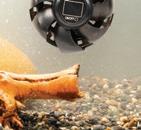
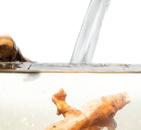

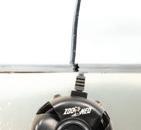
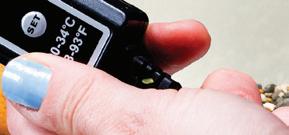


Start your filter and heater. Place your aquarium lights and turn them on, and set your timer, if you’re using one. Make sure everything works properly.

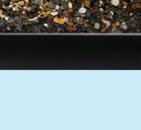






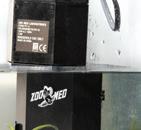


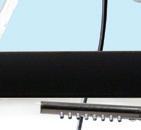
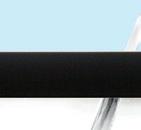






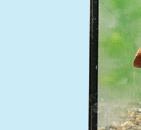














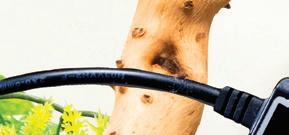

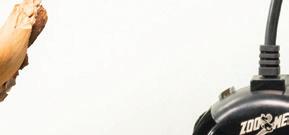

Add a pinch of flake food to your tank, so beneficial bacteria can begin eating and growing in your tank.
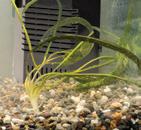

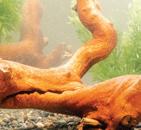


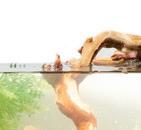


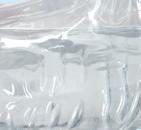
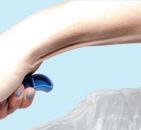


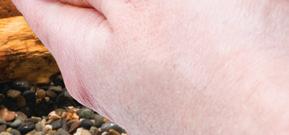


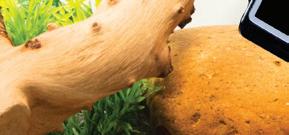
Your tank needs time to allow the beneficial bacteria that keep your water clean a chance to start growing. This is known as aquarium cycling. Allow your tank to run empty for 24-48 hours after setup. Ensure that the water has reached an appropriate temperature for the fish you plan to keep. Then, add your first fish. If you plan to keep a large group, start with just a few, and add more over the next few weeks until you’ve reached your intended population size. For several weeks after you’ve started adding fish, your water quality will fluctuate. During this time, monitor water quality and perform water changes as needed to maintain the recommended water parameters.
There are a few ways you can speed up your aquarium’s cycling process:
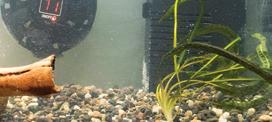
(A) ‘Seed’ your tank by setting it up with some gravel or décor from an already established aquarium. Beneficial bacteria will be transferred from the established aquarium’s items into your new tank. Ask a friend with a healthy aquarium for a sample of gravel or décor, or check with your local aquarium store.

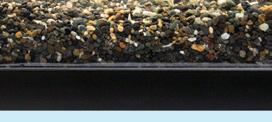

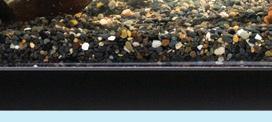

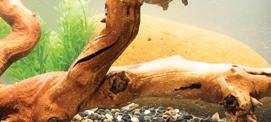

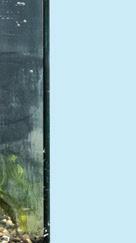




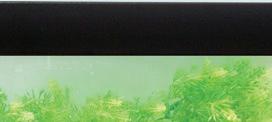


(B) Add a commercially available bacterial additive to your aquarium’s water when you first set up your tank. This will introduce a larger population of bacteria to your tank early on, reducing the time it will take for them to become established.
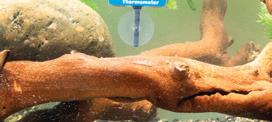




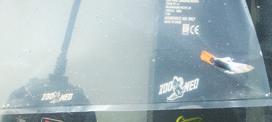
(1) The most common way to introduce a fish to a new tank is to “float” them. Most often, your local aquarium store will send your fish home to you in a plastic bag that is tied at the top. Start by simply placing this bag in your tank and leaving it to float for 15 minutes. This will allow the water temperature in your bag to match the temperature in your tank.
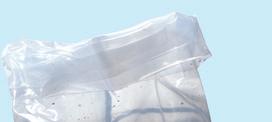
(2) If the bag is very full, open it and carefully pour most of the water into a separate container, until it is about half full. Don’t pour directly into the sink, to prevent accidentally losing your fish down the drain.


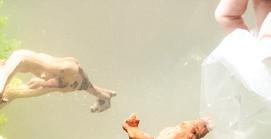









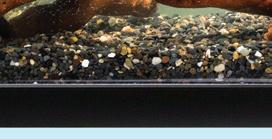
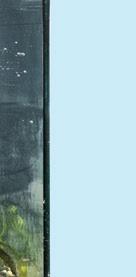


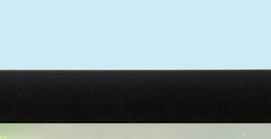



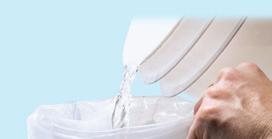



(3) Roll down the rim of the fish bag to create a lip with an air pocket in it. This will hold the open bag afloat in your tank. Pour one cup of your tank’s water into the bag every five minutes, until you’ve added a total of three cups into the bag. This will allow your fish to begin adjusting to the water quality of your tank.



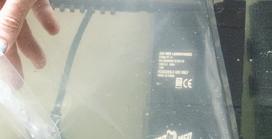
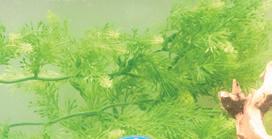

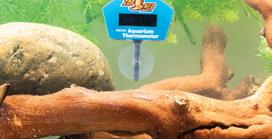
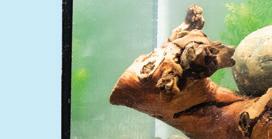


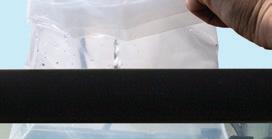
(4) Gently submerge the bag and allow your fish to swim into the tank. When you first add fish, they will probably be shy, and may spend a few days hiding before becoming comfortable enough to come out into the open. This is normal! Leaving the lights off for the first day or two can help to reduce stress for acclimating fish. Give them some time and space to get used to their new home.
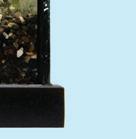
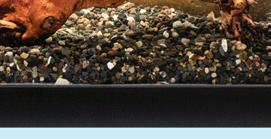
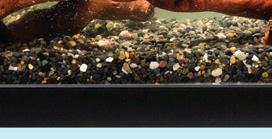
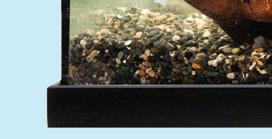

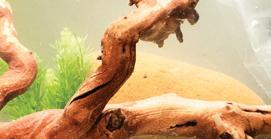
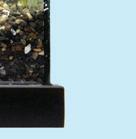

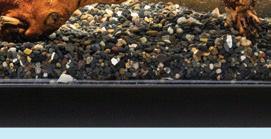
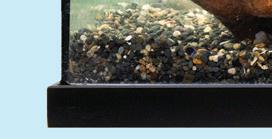

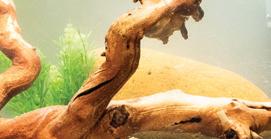
Plants and décor provide important enrichment for your fish's life. They provide shelter and hides for when fish want to get away from human eyes or other fish in the tank, and create spaces for curious fish to explore. Plastic plants, like Zoo Med's Betta Plants, provide a realistic-looking environment without the maintenance required for live plants. Keep in mind that some naturally sourced décor like stones, shells, and wood can alter your aquarium’s water quality by leeching chemicals or minerals within them into the water. Avoid coral sand and shells, which are made of calcium carbonate and will increase the hardness and the pH of your aquarium water. When in doubt, don’t add anything to your tank if you don’t know what it’s made of and how it will affect your aquarium water.
Live plants are a beautiful addition to any aquarium, and many hobbyists maintain aquariums primarily for their plants. Live plants can contribute to better quality water by consuming carbon dioxide (CO2) and nitrates, and releasing oxygen. Once established, plants provide fish with cover, territories to defend, potential spawning or birthing sites, and a natural food source. Like houseplants, aquatic plants have specific lighting and water requirements. Some species need brighter or more intense light than others, and some should be rooted into substrate, while others should be anchored onto décor. With a bit of extra research and maintenance, incorporating live plants into your aquarium can pay off far more than they take to maintain.
Good live plants for beginners include:






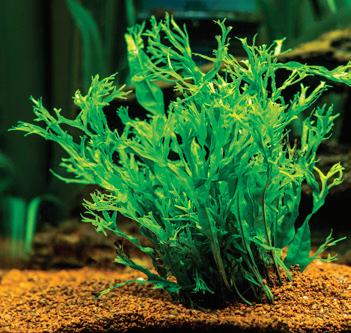
• Java Fern (Microsorum pteropus)


• Sword plants (Echinodorus spp.)
• Water sprites (Ceratopteris thalictroides)
• Vallisneria (Vallisneria spp.)
Your tank’s substrate holds much of the beneficial bacteria that maintain good water quality. The most commonly used aquarium substrate is gravel. Gravel particles are larger than sand particles and have larger pore

spaces. If the gravel is too coarse, it will allow uneaten food and solid fish waste to fall into the pores where filters cannot get to them, which contributes to excessive waste in your tank. You can remove this waste by gravel vacuuming, which is why regular tank cleanings are so important.

Check out the Tank
Maintenance section of this guide for more details on cleaning your tank's substrate
Substrates obtained from sources that are not made specifically for aquarium use, such as construction aggregates, may be a lower cost alternative, but they are often not suitable for use as an aquarium substrate. Ideal particles are rounded in shape to allow water and oxygen to flow through the pore spaces and allow denitrifying bacteria to grow and thrive. Keep in mind that certain substrates will be best for certain types of fish – for example, sand is best for most catfish, as gravel can be too coarse for the sensitive barbels they use to find their food. Remember that the most common rule of thumb is to use 1 pound of substrate per gallon of aquarium water.

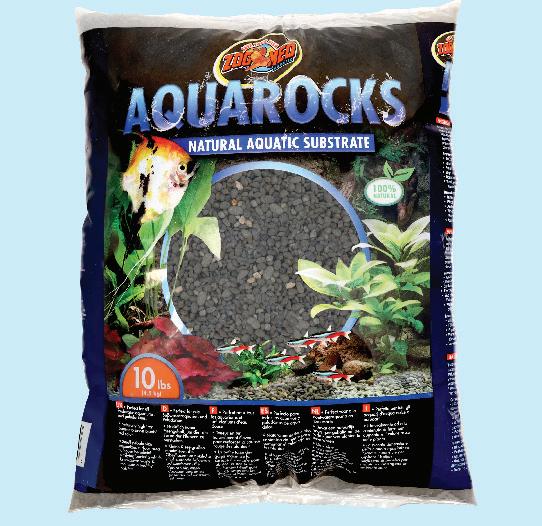

You can use tap water straight from your sink to fill your tank. However, you should ALWAYS treat your water with a dechlorinator, such as Zoo Med's AquaPure Instant Water Conditioner. Dechlorinators work by chemically binding to chlorines and chloramines in your tap water. Untreated, these are very dangerous for fish, but dechlorinators convert them into a form that is safe for fish. Add dechlorinator to your clean tap water per the instructions.
Briefly, the most important aspects of water quality for beginners are: pH is how acidic or alkaline your water is. The pH scale goes from 0-14, with 0 being extremely acidic, 7 being neutral, and 14 being completely alkaline. Some fish prefer more acidic or alkaline water than others, but most freshwater fish will thrive in water with a pH close to 7. However, this doesn’t apply to all fish – for example, African rift lake cichlids do best with a pH of 7.5-9!

Hardness is a measure of how many minerals are dissolved in your water, in particular, calcium and magnesium. These minerals are important for healthy biological functions like fish muscle and bone development, snail shell development, and plant growth. Hardness is typically measured in parts per million (ppm); people refer to water with low hardness as “soft” water. Most freshwater fish can tolerate a range. Identify if your fish need harder or softer water, or choose fish that will thrive in the hardness of your source water.
A water quality testing kit will allow you to easily measure your water quality. Commercially available testing strips can be dipped right into your water to give you measurements in 30 seconds or less. Many aquarium stores will also test a sample of your tank's water for you.
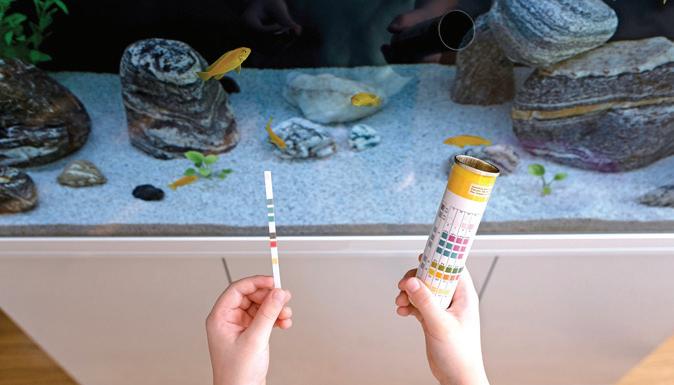
The Nitrogen Cycle is the process driven by beneficial bacteria in your tank that keeps your water from becoming too toxic for fish. Fish waste is heavy in ammonia; bacteria consume this and convert it into nitrites, and then into nitrates, which is the least toxic form of nitrogen in your tank. Weekly 20% water changes are the best way to keep nitrates below a toxic level. All of these compounds are usually measured in parts per million (ppm); a healthy freshwater tank should have 0 ppm of ammonia, 0 ppm of nitrites, and less than 40 ppm of nitrates.

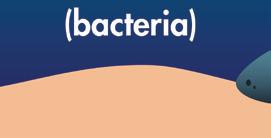



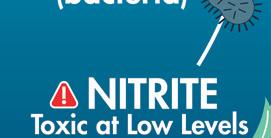











The best ways to maintain good water quality in your aquarium are:


• Weekly tank cleaning – this is the most important point of care for a fish tank! Perform a weekly water change of 20-30%, and vacuum the gravel to remove waste.



• Don’t overfeed your fish. Only feed fish as much food as they can completely consume in five minutes, and always remove leftover food from the tank when your fish are done eating.

• Don’t overstock your tank with fish; too many fish will add a lot of waste into your water.





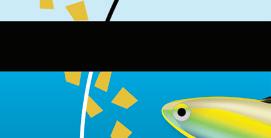
• Make sure your filter is running at all times and that your tank has enough oxygen. Most


















tanks with adequate filtration that are receiving regular water changes will have plenty of oxygen, but you can also add an aerator with an air stone or action ornament to your tank for supplemental oxygen.
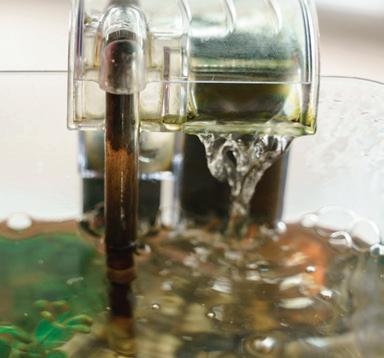


There are many types of aquarium filters, and they all have the same goal: to remove particulate matter and chemical buildup in your tank's water that contribute to poor water quality.
• Submersible/Internal filter – these motorized filters sit completely inside your fish tank, making them easy to get started. They have easier disassembly than canister and power filters and usually have adjustable water flow output. Check out Zoo Med's Paludarium Filters for great submersible filter options! Remember to change the cartridges for these every 1-2 weeks.
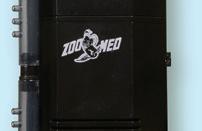
• Canister filter – these filters also use a motor and sit primarily outside the tank, which means they will take up some additional space, but their larger filtration area means they only need to be cleaned every 1-2 months. They create a higher water flow and can be modified for specific tank needs. Check out Zoo Med's Macro and Nano Filters for easy-touse canister filter choices!
• Hang-on-back/Power filter – these motordriven filters sit on the lip of your tank, drawing water from inside and returning it over the edge of your tank like a waterfall. They establish a higher water flow and provide a variety of filtration media.

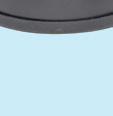


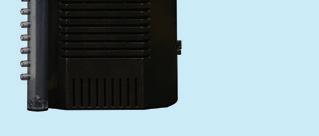

• Sponge filter – these require an air pump to draw water through a sponge that sits inside your tank. They are cheap and easy to clean, and don't create much water flow, so they are safer for small baby fish.
Other types of filters include box or corner filters, under gravel filters, trickle box filters (also known as wet/dry filters), refugium filters, and fluidized bed filters.
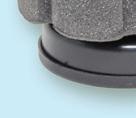
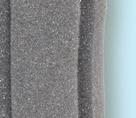
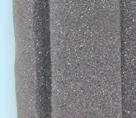




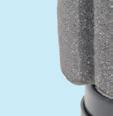


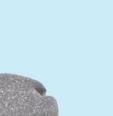
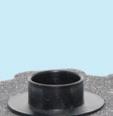

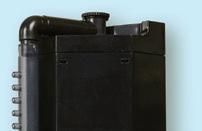



Filters clean dirty aquarium water by pulling it through different types of filtration media and returning clean water back into the tank.
• Biological filtration makes use of the beneficial bacteria in your tank to consume toxic nitrogenbased compounds that accumulate in your tank from fish food and excrement. Typically biological filtration media is a porous substance such as ceramic rings that can easily harbor a healthy colony of beneficial bacteria.

• Mechanical filtration traps floating debris and larger particles using a sponge, pad, or mop of floss. Mechanical filter media must be regularly rinsed or renewed to prevent it from clogging, and comes in different degrees of coarseness to trap larger or finer particles.


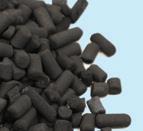







• Chemical filtration uses a medium such as activated carbon or specially formulated resins to absorb potentially harmful molecules in the water, such as tannins, medications, or other chemical compounds. Chemical filtration media must be changed regularly, as it stops working effectively once it’s been saturated with impurities.
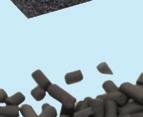

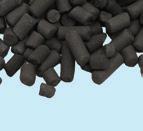

Make sure your aquarium is at the correct temperature for your fish. Ask the aquarium store where you bought your fish what temperature they are keeping them at. Most popular freshwater fish species are tropical and require temperatures of 74-80°F (23-26°C), but some species (like discus fish) like it warmer (7882°F, or 25-28°C). Goldfish are cold water species and prefer temperatures of 62-68°F (17-20°C).
You will want to monitor your tank’s temperature with a thermometer, such as Zoo Med’s Digital Aquarium Thermometer. Depending on the ambient heat available in your tank's location, you may need supplemental heating, which you can provide easily with an underwater heater, such as Zoo Med's Paludarium Heater. Most heaters work best when closer to the bottom of your tank, as well as close to the output flow of your filter, as this will allow the heated water to circulate more effectively throughout the tank.
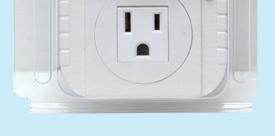

Your fish's lighting setup is how you establish a photoperiod, which is the amount of time your fish are experiencing daylight. Photoperiods are important for maintaining your fish's natural circadian rhythms, which influence their metabolism and behavior; they also help to maintain the cycles that promote plant growth, if you have live plants in your tank. Having regular periods of light and darkness will prevent excess algae growth, and will allow your fish to rest adequately during the night hours and get the stimulation they need during the daylight hours. The easiest way to establish a photoperiod is to use a timer with your lights, such as Zoo Med’s AquaSun Aquarium Timer.




LED and fluorescent lighting are the most commonly used for aquariums. LEDs are slimmer and produce more light per watt than fluorescents, and are often dimmable or adjustable. Fluorescent lights are less expensive up front and more established in the aquarium trade, so there may be more options available to aquarists. Whichever way you choose to light your tank, Zoo Med offers a variety of options to create a beautiful lighting environment for your fish.

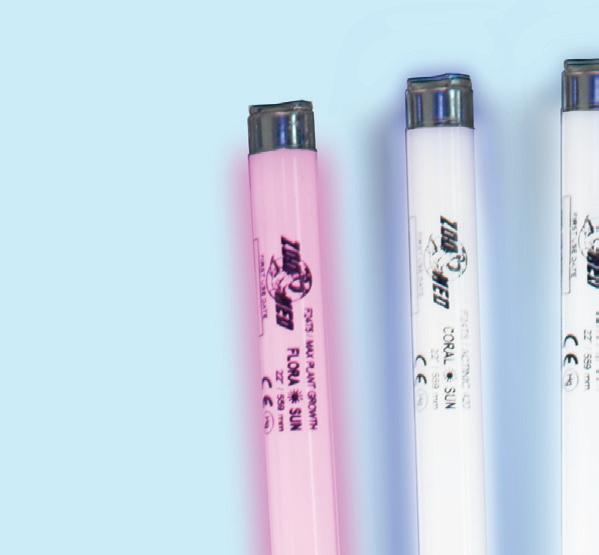


Water
Remove 20-30% of the water in your tank and replace it with clean, dechlorinated water that matches the temperature of your tank.
Substrate Remove solid waste with a gravel vacuum, siphon, or net. Note that gravel vacuums and siphons will also remove some tank water (see box above).
Walls, tank lid, interior walls and surfaces of décor and equipment
Filter
Scrub algae growth with a clean scrubbing pad.
Weekly
Weekly
Exterior walls
Remove it from your tank, dump dirty water, and disassemble it. Clean or replenish your filter media. Be sure to reassemble it properly before turning it back on.
Clean with non-toxic glass cleaner, such as Zoo Med’s Wipeout.
As needed
Biweekly to monthly
As needed
*Never use soap or chemicals to clean anything in your tank. These substances will leach into your water and can be very harmful to your fish! Removing algae with just a scrubbing pad is adequate. Also, avoid removing more than 50% of your tank’s water at a time, to avoid abruptly changing your water quality.
The Golden Rule of fish feeding is to only feed fish as much food as they can eat in five minutes. Remove left-over food from the tank right away to prevent mold and other water quality problems. The amount and type of food you feed your fish will depend on your species and the number of fish you have – so always research the nutritional requirements for your particular fish!
The most popular types of fish food include:
• Flake foods, such as Zoo Med's Spirulina20 Fish Food Flakes. Spirulina is a blue-green algae that provides many health benefits. Recently
reformulated to remove yeast fillers, Spirulina20 is more palatable for fish and appeals to even the pickiest eaters.

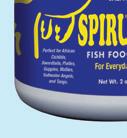

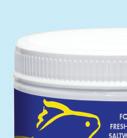
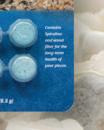
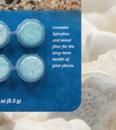
• Pellet foods come in a variety of sizes and formulas for different species. These include sinking wafers, which sink to the bottom of your tank for catfish and other bottom feeders who may be less comfortable feeding at the surface of the water. Pay special attention to the size of the pellets or wafers you're providing, so that you're sure your fish can fit their mouths around them.
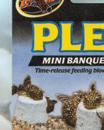
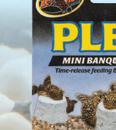

• Frozen foods last for a very long time in your freezer and are a great way to get extra fat and nutrients into your fish's diet. The most popular varieties are frozen daphnia, brine shrimp, and mysis shrimp.





• Fresh foods include lettuce leaves, veggies like sliced cucumbers, green beans, peas, and even fruit slices for some species. Pickier eaters can be enticed to eat some of these by holding them underwater with Zoo Med's Floating Fish Food Clip. You can also provide live duckweed to your fish, which in addition to being a food source, provides a water surface cover for species who don't like direct light.
• Live foods allow your fish to hunt their food like they would in nature. These require some start-up work – you either need to hatch them out ahead of feeding time or maintain a culture – but they are highly nutritious and enriching for your fish. The most popular live foods include daphnia, brine shrimp, ghost shrimp, microworms, Walter worms, and vinegar eels, but there are many more! Check with your local aquarium store to see if they have pre-cultured live foods for purchase.

• Block and Vacation foods, such as Zoo Med's line of Banquet Time Release Feeding Blocks. These blocks last for up to a week in your fish's tank, making them a perfect solution for short trips away from home when no one is available to feed your fish.


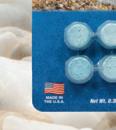




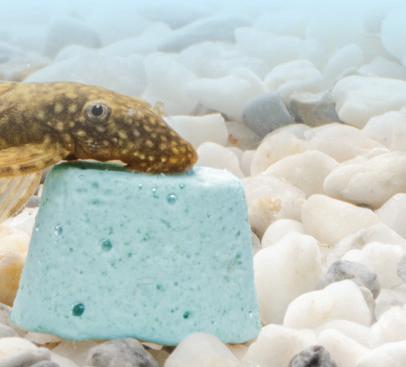
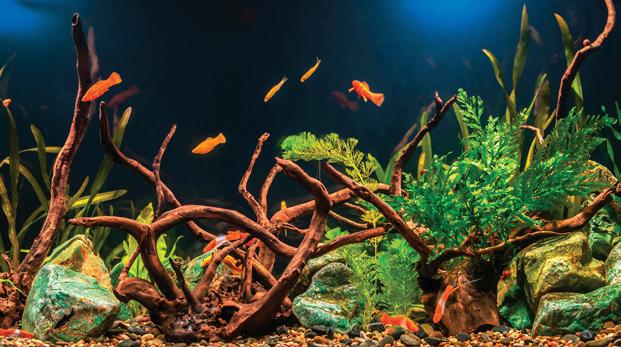
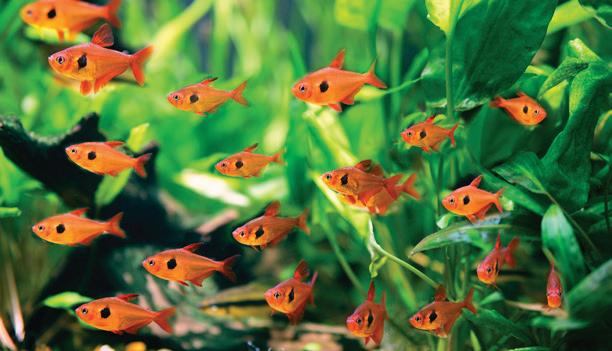
Fish perform all kinds of fascinating natural behaviors, which we can facilitate by providing enrichment. Enrichment means anything in your fish's environment that allows them to demonstrate natural species-appropriate behaviors, or that challenges or stimulates them mentally. Usually this involves introducing things that are novel or new to your fish. After providing your fish with enrichment objects, observe their behavioral response and adjust what you provide accordingly.
Straightforward ways of providing enrichment include:
• Providing an appropriate social environment. Solitary fish like bettas or pufferfish can be stressed by inappropriate tank mates, but highly social fish get stressed out when they are alone, and providing groups can allow for natural communication and breeding behaviors. Consider groups of 10 fish or more for schooling fish like tetras.
• Creating interesting physical structures inside your tank. Make your tank exciting for fish to explore by including things like wood pieces, plants (artificial or live), hiding spaces, and decorations for your fish to investigate. Periodically introduce novel objects for curious fish; just be sure to monitor your fish's reaction to new objects for signs of stress, as some territorial fish might be picky about what's in their tank.
• Alter the water movement in your tank, if appropriate. Some fish should have slow-moving water, like bettas and some tetras, but for fish species that can handle more water movement, introducing fast water or changing the direction of currents can be very enriching. You can do this very easily by altering your filter placement in your tank or inserting a water pump that can be turned on or off at will, such as Zoo Med's MicroPump 104.


• Feed new foods periodically. Fish like treats too! Many aquarists rely on flake foods for their fish's primary diet, but by introducing new food items at random, you can add a lot of excitement and interest into their diet. Zoo Med's Can O' Bloodworms and Can O’ Cyclops are great sinking options for fish of different sizes, as well as Zoo Med's Large Sun-Dried Red Shrimp, which float, for fish who like to feed at the surface. You can hold fresh veggies or greens under the water with Zoo Med’s Floating Fish Food Clip, or provide live foods such as daphnia or brine shrimp for your fish to hunt.



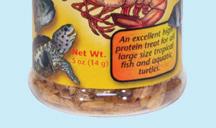
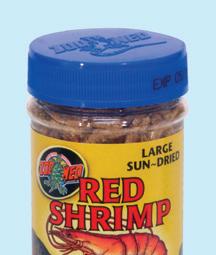
• Some fish like to interact with their keepers, which can be a great source of enrichment for both fish and owner! Betta fish, puffer fish, goldfish, and others can be enticed to follow a feeding wand (such as the feeding wand included with Zoo Med’s Betta Pellets), swim around obstacles, and even perform tricks for treats. This type of interaction takes patience and careful monitoring of your fish’s response, but can result in a closer bond between you and your fish.
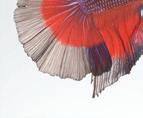
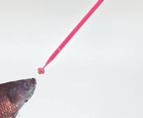



Disease can be hard to diagnose and even harder to treat, even with many commercially available medications. Most often, the cause of fish disease is poor water quality or sudden temperature changes. Practice regular tank cleanings and good feeding habits to prevent disease in the first place.



You can use your fish’s behavior as a metric to gauge their health. Happy and healthy fish will swim easily throughout most of their tank space. They will investigate objects in the tank, forage for food, and may interact with tank mates. Stressed or sick fish will show some distinctive signs. They may be lethargic while swimming, stationary in a corner, or hidden behind objects; they may breathe very rapidly (identifiable by rapid gill movements); and they may darken in body color and clamp their fins against their bodies. Getting to know your fish as individuals when they are healthy will help you more easily identify when they are sick.


Small white salt-like specks on fins or scales
Fins slowly degrading over time, sometimes with a discolored edge
Eyes bulging abnormally
Distended belly, a “bloated” appearance that’s not from over-eating
Cottony growths on your fish’s scales, skin, fins, or gills
Grey or white threads hanging from scales
Fish struggling to swim, may be very skinny
Ich (aka White Spot Disease)
Fin Rot
Fungal Infection
Popeye
Dropsy
Malawi Bloat
Constipation
Fungal Infection
Anchor Worms
Swim Bladder Disease
If you notice any signs of illness or anything else unusual about your fish, the best practice is to take some pictures and notes on your fish's symptoms, do a water quality test, and some research. Consulting a local aquarium club or aquatics store is a great practice, as they will be made up of knowledgeable, enthusiastic fish keepers who can guide you on proper treatment and medications.
Fish are some of the most beautiful and interesting pets that an animal lover can keep. If you find yourself falling in love with your new hobby, consider joining a local aquarium society or even a national fish club to meet like-minded enthusiasts! They can offer guidance for any challenges you encounter, and can help you take your fish keeping to the next level. See the list of websites below that offer lists of local and national aquarium clubs and societies that you can join.
• https://aquariumstoredepot.com/blogs/news/115583684-the-grand-list-ofaquarium-hobbyist-clubs-and-societies

• https://www.aquariumspecialty.com/aquarium-clubs
• http://www.aquaworldaquarium.com/Local_Fish_Clubs.htm




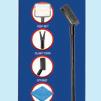


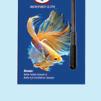

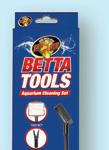
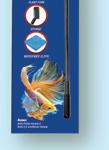

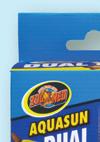









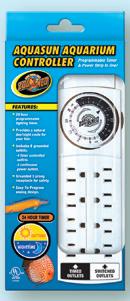




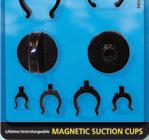


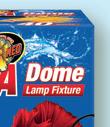

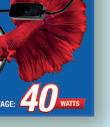


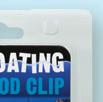
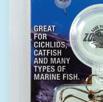


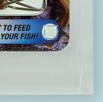



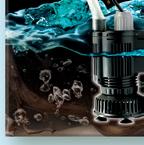
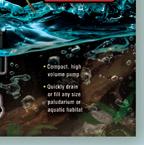


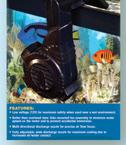

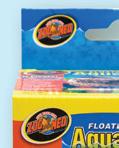
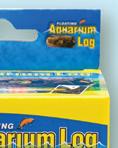
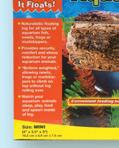



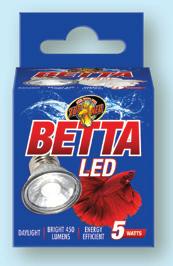

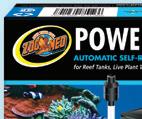











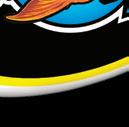
 BP-41 Betta Tools Aquarium Cleaning Set
AA-14 AquaSun Aquarium Dual Timer
BL-10 Betta Floating Log
AA-11 AquaSun Aquarium Controller
BP-1 Micro Floating Betta Pellets
MS-1 MagClip Magnetic Suction Clip
BL-35 Betta Dome Lamp Fixture
FFC-10 Floating Fish Food Clip
TC-70 Terra Pump Aquatic Habitat Drain Pump
AA-13 AquaCool Aquarium Cooling Fan
A-5 Floating Aquarium Log
BL-5N Betta LED Lamp
BP-41 Betta Tools Aquarium Cleaning Set
AA-14 AquaSun Aquarium Dual Timer
BL-10 Betta Floating Log
AA-11 AquaSun Aquarium Controller
BP-1 Micro Floating Betta Pellets
MS-1 MagClip Magnetic Suction Clip
BL-35 Betta Dome Lamp Fixture
FFC-10 Floating Fish Food Clip
TC-70 Terra Pump Aquatic Habitat Drain Pump
AA-13 AquaCool Aquarium Cooling Fan
A-5 Floating Aquarium Log
BL-5N Betta LED Lamp